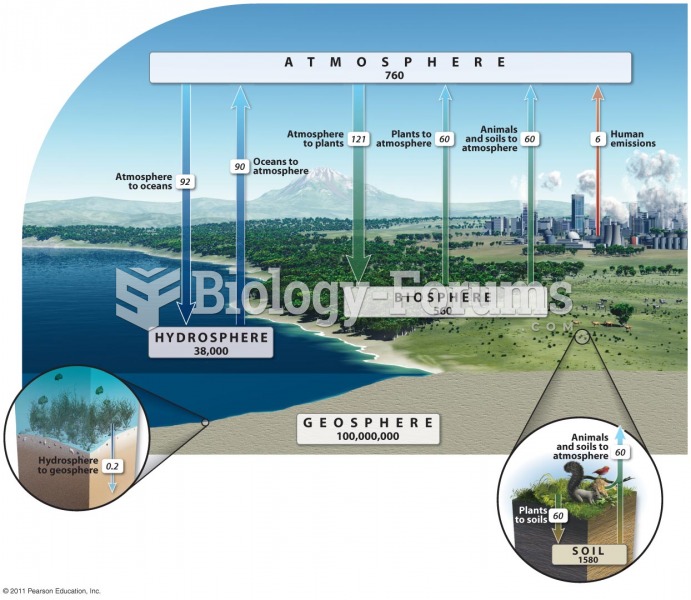Answer to Question 1
Water evaporates from surface water when it is heated, and condenses when it cools. Water is pure at this point because only water molecules evaporate. When enough water condenses, precipitation occurs. As precipitation moves through the atmosphere it may pick up water soluble pollutants but it may also be fairly pure if not many water soluble compounds are encountered. When precipitation reaches the ground, some of the water infiltrates the soil and some runs off to streams, lakes, and the oceans. This water will pick up solutes from the soil. The water that soaks into the ground may either be capillary water or gravitational water. Gravitational water will percolate through the ground and collect as groundwater in an aquifer and may be released to the surface through seeps and springs. The height of the water table will determine if springs or seeps are flowing or dry. The recharge area for an aquifer may be over a fairly large surface of land. Capillary water will be picked up by plants or evaporate from the soil. Water is transpired through plants, and evapotranspiration is the process by which water is evaporated and transpired from plants.
There are three principal loops in the cycle: (1) In the evapotranspiration loop (consisting of green water), the water evaporates and is returned by precipitation. On land, this water, the main source for natural ecosystems and rain-fed agriculture, is held as capillary water and then returns to the atmosphere by way of evapotranspiration. (2) In the surface runoff loop (containing blue water), the water runs across the ground surface and becomes part of the surface water system. (3) In the groundwater loop (also containing blue water), the water infiltrates, percolates down to join the groundwater, and then moves through aquifers, finally exiting through seeps, springs, or wells, where it rejoins the surface water.
Answer to Question 2
Precipitation: any form of water (snow, sleet, hail, rain) that falls from the atmosphere;
Infiltration: water that soaks into the ground;
Runoff: water the runs off the surface; a blue water flow;
Capillary water: water that returns to the atmosphere either by way of evaporation from the soil or by transpiration through plants;
Transpiration: the green flow of water through plants;
Evapotranspiration: the combination of evaporation and transpiration;
Percolation: water that infiltrates into the ground and trickles through the pores or cracks;
Gravitational water: water that is not held in the soil and moves downward under the pull of gravity;
Groundwater: the accumulated water from gravitational water that has encountered an impervious layer of rock or dense clay;
Water table: the upper surface of groundwater;
Aquifer: layers of porous material through which groundwater moves;
Recharge area: the area where water enters an aquifer;
Seep: a natural exit from groundwater where the water flows out over a relative wide area;
Spring: water exits the ground as a significant flow from a relatively small opening.







